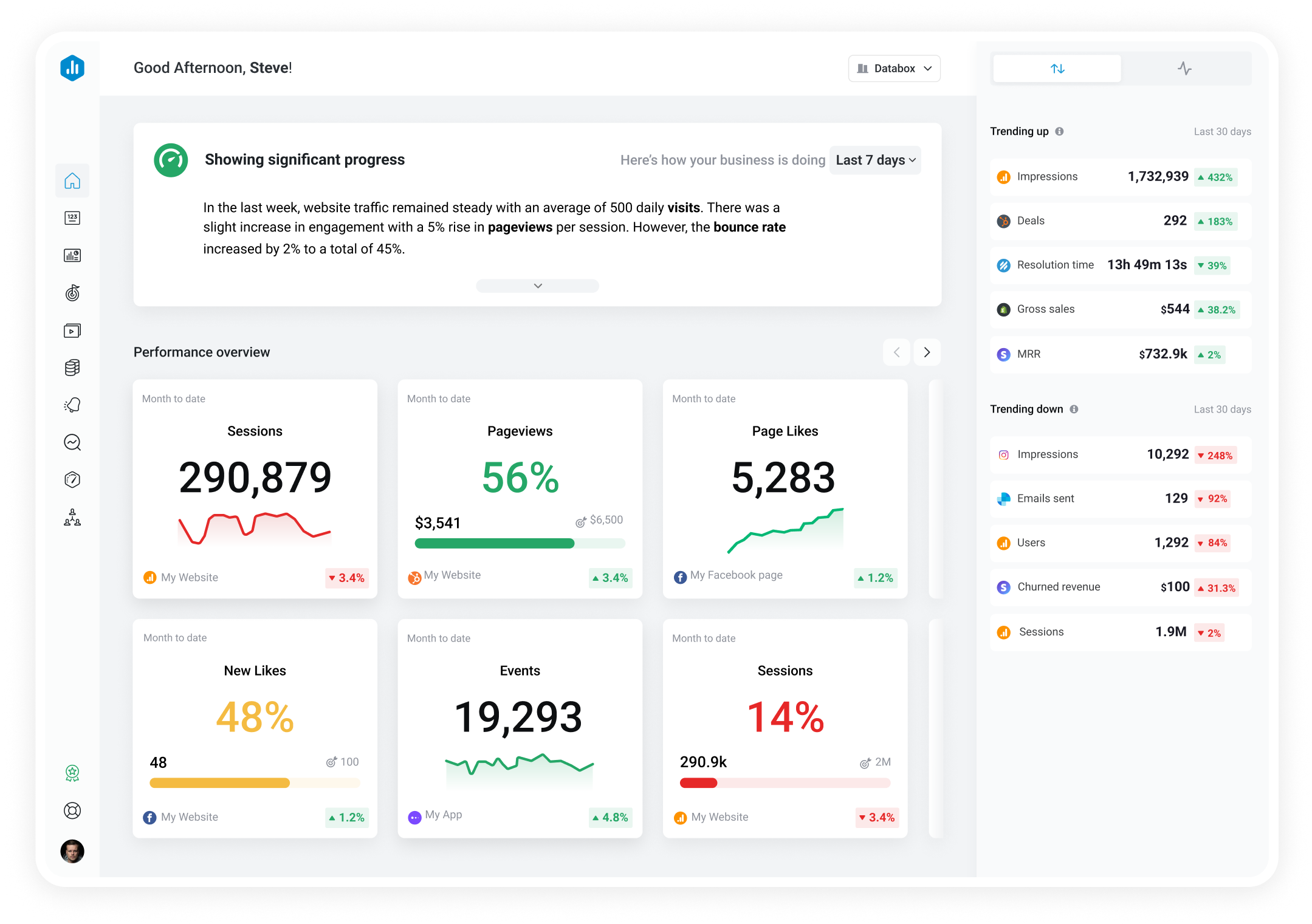Track all of your key business metrics from one screen
GET STARTED
 Google AdMob
Impressions CTR by Ad Unit
Google AdMob
Impressions CTR by Ad Unit Impressions CTR by Ad Unit measures the click-through rate (CTR) of ads served in a specific ad unit, calculated by dividing the number of clicks by the number of impressions.
With Databox you can track all your metrics from various data sources in one place.

Used to show comparisons between values.
Databox is a business analytics software that allows you to track and visualize your most important metrics from any data source in one centralized platform.
To track Impressions CTR by Ad Unit using Databox, follow these steps:
 Goals
Goals Scorecards
Scorecards Metric Digest
Metric Digest Metric Builder
Metric Builder Data Calculations
Data Calculations Performance Screen
Performance Screen